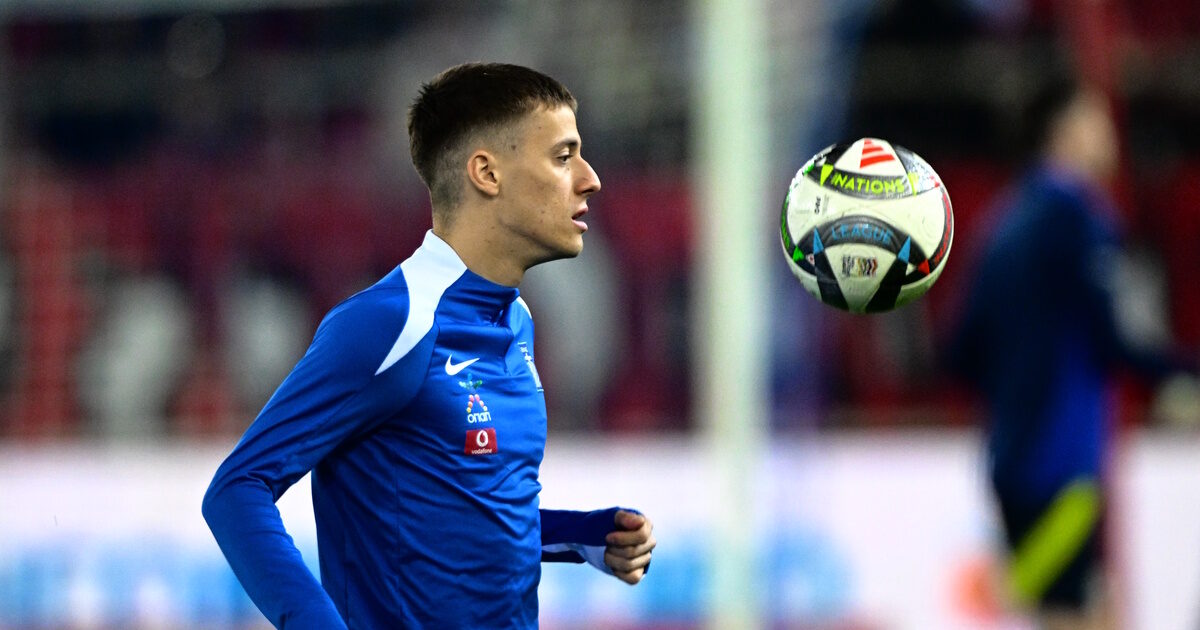The International Football Association (IFAB) has put into effect eight basic changes to its regulations footballwith the aim of improving the flow of the game, as well as more transparency.
Of the new decisions, some are more technical, others more practical, with the rationale is football and games being faster and there is no so -called “dead” space.
In this way there will be changes to the offside regulation, penalty shoot -out, the time a goalkeeper will hold the ball in his hands before he continued the game, and the referees will also be able to announce their decisions in phases examined in VAR.
1. Eight seconds for the goalkeeper – and stricter penalty
The goalkeeper will now have eight seconds to hold the ball in his hands, instead of the six who was theoretically planned to date. But the difference is not only a time: in the event of a delay, the penalty will not be an indirect foul, but a corner in favor of the opposing team.
The new regulation was first implemented in the World Cup 2025, in the Mamelonti Santauns – Ulsan.
2. The referee becomes… a timer
In addition to the above change, a visual indication is also introduced by the referee when approaching the end of the time limit. Specifically, the referee raises his hand and counts down, so that all players and spectators know that time is running out.
3. New way of resuming with ‘Dropped Ball’
The way to resume “Dropped Ball” is reviewed when the game is interrupted for reasons that are not related to infringement (eg injury). If the referee is not sure which team was in possession, the ball is given to the last team that touched it. But if it is clear who was in possession or was to acquire it (eg from side or foul), then the re -opening is in favor of it.
4. No card for unintentional contact with the ball out of the field
Players, coaches or missing out of the field will no longer be punished by card if they inadvertently touch the ball when it comes out. Instead of a penalty, it will be indicated indirectly foul, since the flow of the game is not affected. IFAB considered that severe punishment for such cases is excessive.
5. Changes in offside with last contact
The offside is changing: the last contact with the ball is now taken into account and not the first. This is important in cases where a player touches the ball more than once before transferring it. The new rule helps in the clearer evaluation by VAR and reduces cases of confusion.
6. Double contact in penalty: Repeat or foul
In the event that the penalty shootout inadvertently touches the ball and with the other foot (eg due to slip), the regulation differs:
– If the ball comes to a goal, the penalty is repeated.
– If it does not score, an indirect foul is attributed to the defense.
In the penalty shoot -out, the infringement will be a failed execution.
This change came after Hulian Alvares’ controversial penalty in this year’s Atletico -Real Madrid match, which was canceled by referee Simon Martsiniak.
7. Change of the assistant referee in penalty shoot -out
Now, the assistant referee will not stand on the goal line during a penalty shoot -out. On the contrary, it will be placed at the height of the last line of the defenders – on the theoretical line of the offside. This will be able to observe any premature entry of players into the region and ensure proper execution and reviews.
8. Announcement of referees for VAR decisions
Another change concerning how VAR’s decisions are announced. This year, and if the event permits, the referees will be able to publicly announce – through microphone – their final decision to the public.
This practice began experimentally in the Women’s World Cup and was deemed successful. The referee will not be limited to gestures, but will soon and clearly explain the reasoning of the decision. Objective: Transparency, clarity and less confusion for everyone.
